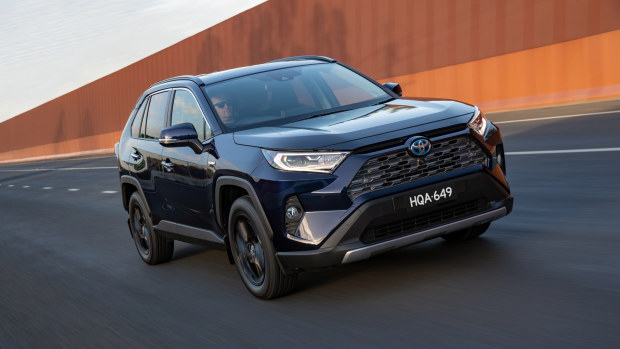Tesla, Toyota and their lithium suppliers are clean energy winners

The transition to clean and renewable energy sources over the next decade will offer significant opportunities to create wealth for investors who own the winning stocks.
Booming demand for battery materials and electric vehicles has already produced most of the sharemarket’s biggest winners over the last few years.
In the US, energy storage and electric vehicle business Tesla is up 15-fold in four years to a $US770 billion ($1.2 trillion) valuation, while Australia’s white-hot lithium sector has produced life-changing winners for early investors, including at Liontown Resources, Allkem, and Pilbara Minerals.
A portfolio manager at Antipodes Partners, Graham Hay says Tesla is an obvious way to play the clean energy theme given the mandated growth of electric vehicles. But he cautions that Tesla’s valuation is high at 65 times profits, as competition from Western and Chinese rivals increases. Another automaker is the fund manager’s pick to play the transition.
“Toyota is hiding in plain sight,” he says “Since it launched the hybrid Prius in 1997, it has hybridised its vehicle mix and consumers want this. The hybrid portfolio has grown quickly for five years and almost a third of Toyota’s units are hybrids now. The market hasn’t paid much attention to this, but it’s important in the energy transition story.”

The Toyota RAV4 Hybrid is one of Australia’s best-selling vehicles and Graham Hay says the vehicle maker can exploit the clean energy transition.
Shares in the Tokyo-listed car giant are up 94.5 per cent over the past five years. According to Hay while it only trades on 11 times profits, it has more growth levers based on new battery technologies and the ultimate electrification of all vehicles.
“Toyota has the biggest portfolio of critical patents for solid-state battery technology in the [auto] industry,” he says. “They’re a couple of years away from commercialising the [new solid-state] batteries, but it would be transformative for adoption of electric vehicles. Toyota says it will have cars in the market later this decade based on their proprietary solid-state battery architecture, so we think it’s underappreciated.”

Head of ESG research UBS Australia, Camille Wynter. Louie Douvis
Diverse opportunities
Clean energy – including electric vehicles, battery storage, nuclear, grids, solar, wind and hydro – will account for $US1.7 trillion from energy investment of $US2.8 trillion in 2023, according to the International Energy Agency. The balance of around $US1 trillion will be spent on coal, gas and oil.
The pace of investment will also accelerate thanks to government funding plans, which include the US Inflation Reduction Act (worth up to $US3 trillion) and Australia’s National Reconstruction Fund (worth up to $15 billion).
“So, things are moving quickly, and investors need to be across what this means for their portfolios,” says Camille Wynter, the head of environmental, social and governance (ESG) research at UBS Australia. “Some supporting industries will be huge beneficiaries.
“Engineering, developers, the construction industry – they’ll have to build the renewable energy projects. There’s a huge amount of steel and cement needed to build these projects, we see the cost of steel and cement booming.”
According to Wynter Australia now has a target to take 82 per cent of its national grid electricity from renewable sources by 2030, while other ways to play clean energy include investing in companies that can process minerals like lithium from their raw form into higher value battery-grade ingredients.

Ophir Asset Management co-founder, Andrew Mitchell. Dominic Lorrimer
ASX stock picker Andrew Mitchell, co-founder of Ophir Asset Management, says his favoured buy among clean energy’s supporting industries is newly-listed LGI Limited.
The company uses industrial hardware to extract biogas from Australian rubbish dumps across the East Coast and recycles it into power for the national grid. LGI also claims carbon offset credits from the government as its technology improves the environment.
“When people think renewables they think, wind, solar and hydro,” says Mitchell. “But there are niche operators in renewables like LGI playing important roles in the ecosystem because they directly reduce emissions caused by landfills. LGI just sell into the grid, but if they can install batteries to store electricity and sell it into the grid when prices are more favourable, it could earn more. This is topical now as we’ve had El Niño declared and everyone will run their air conditioning 24/7 this summer.”
In a rare ASX initial public offer in 2022, LGI floated at $1.50 per share and has climbed 40 per cent to $2.10 on September 25.
Other fund manager favourites to exploit booming demand for clean energy, include Nasdaq-listed next-generation solar panel manufacturer First Solar.
According to Gary Hui, the founder of Geometrica Fund, the insatiable demand for solar panels made in the US could see First Solar earn $US24.60 per share by 2025 to make the stock worth $US425 if applying a 15 times earnings multiple.
First Solar shares fetched just $US156.34 on October 2 on a market value of around $US16.7 billion.
Introducing your Newsfeed
Follow the topics, people and companies that matter to you.
Find out moreRead More
Latest In Investing
Fetching latest articles